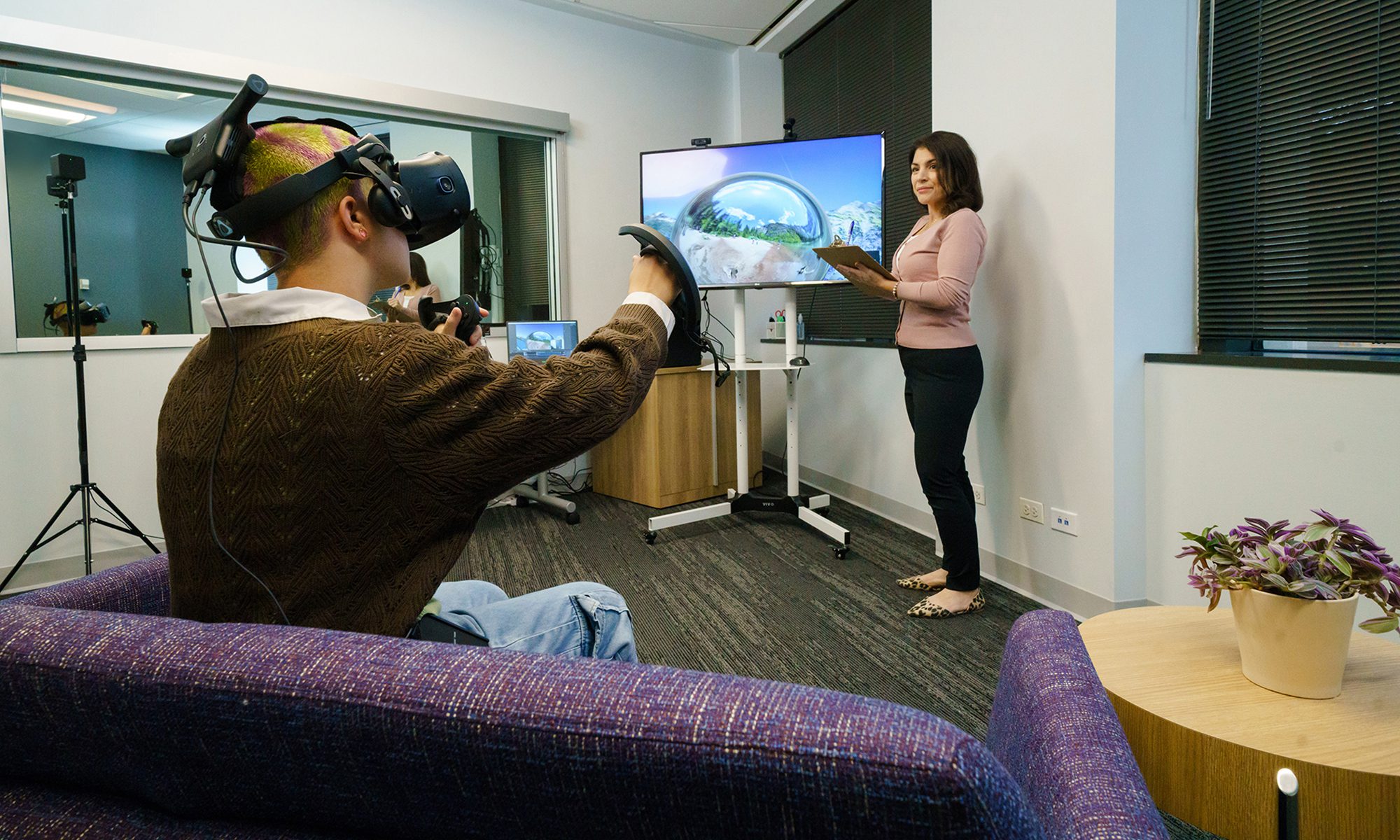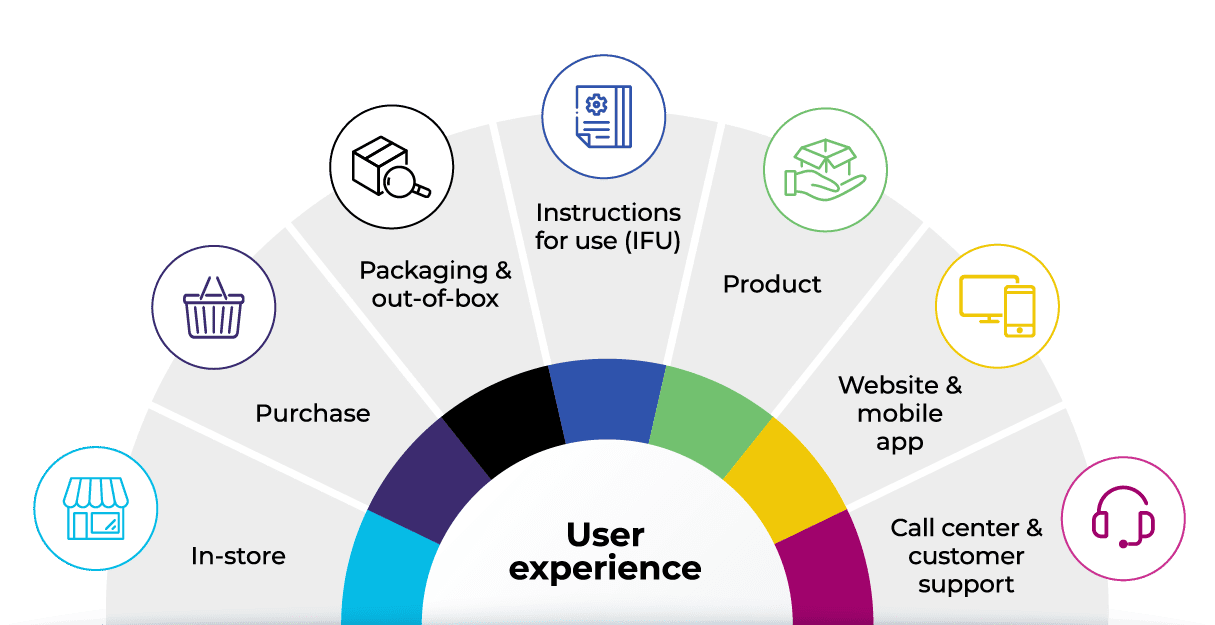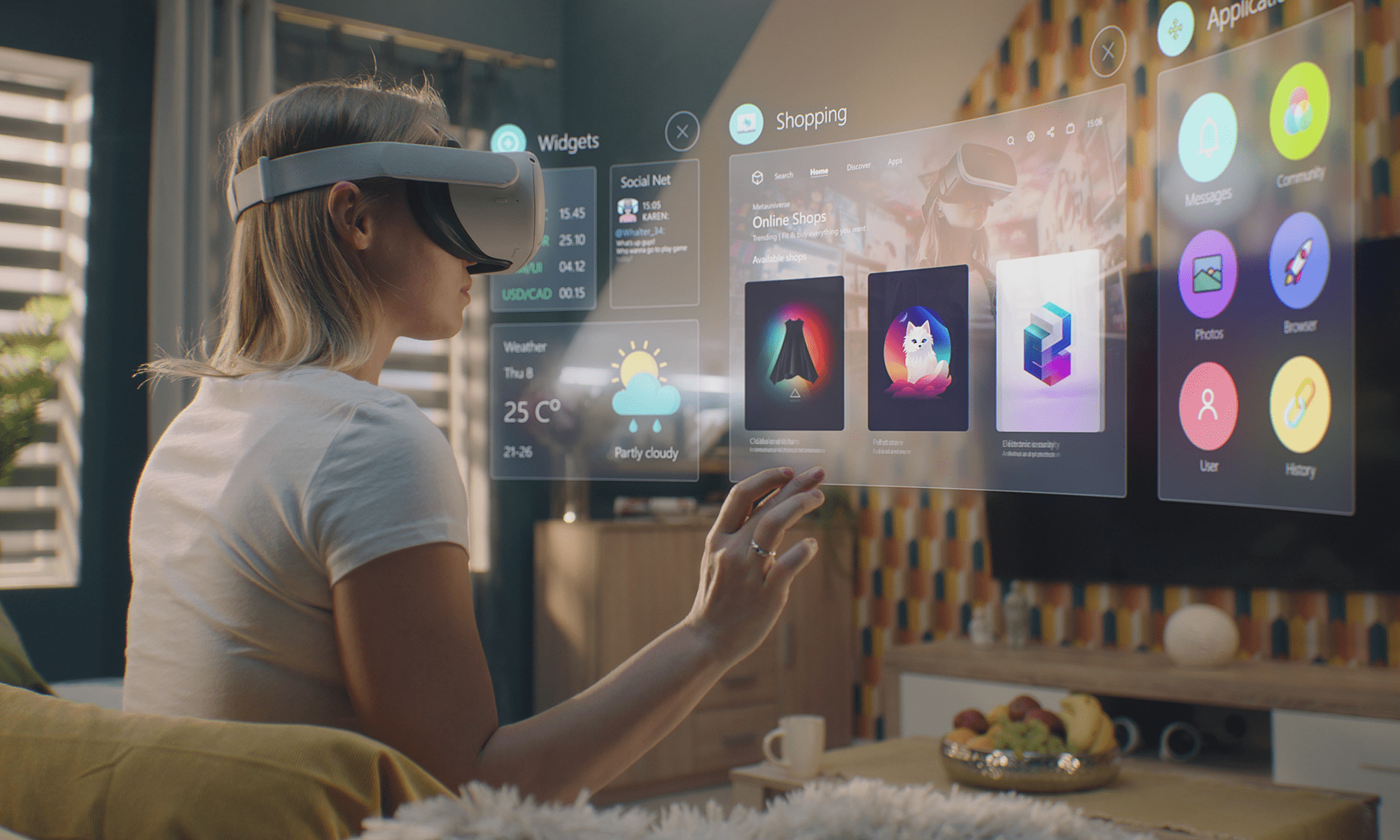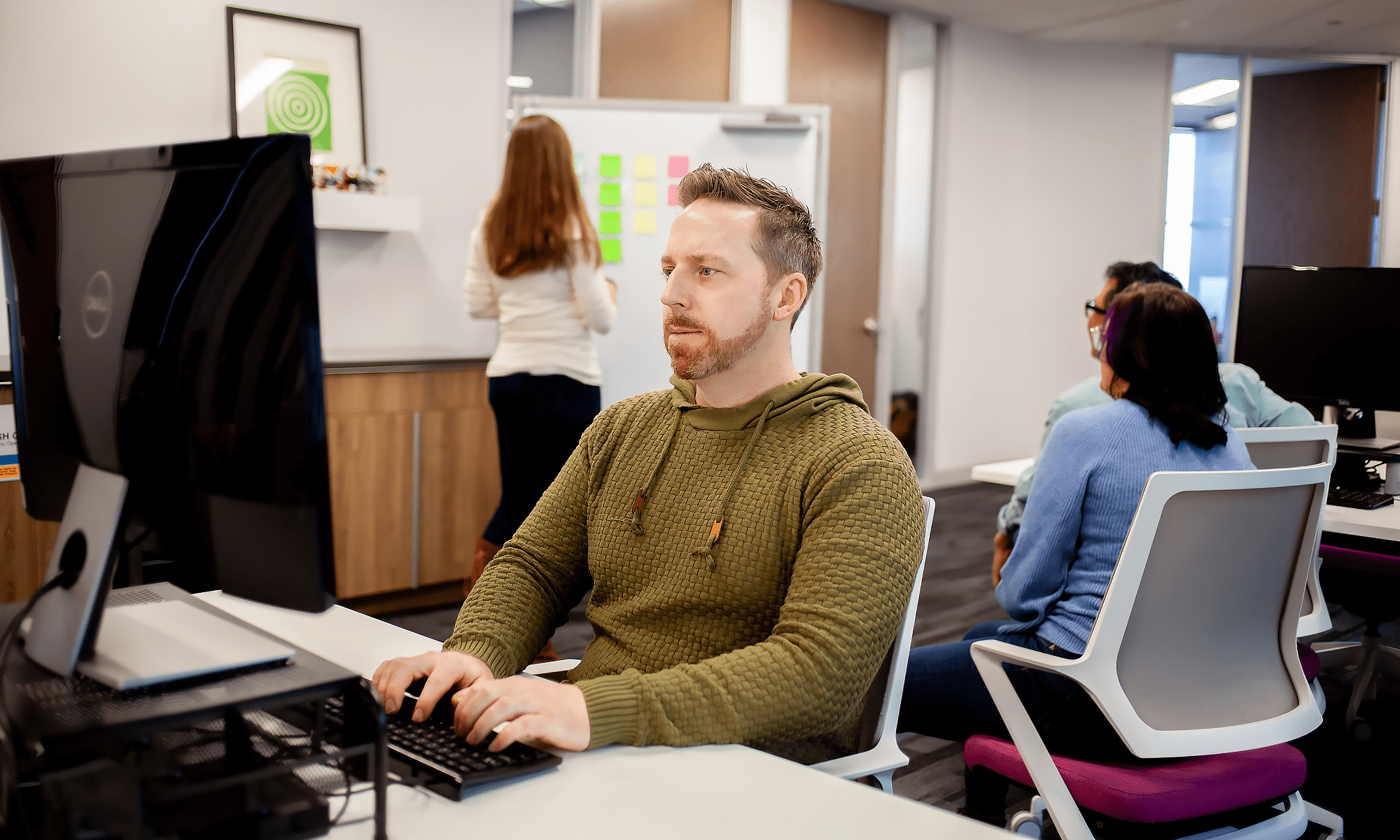UX research & strategy
Great experiences don’t happen by accident

We transform user insight into alignment, decisions, and product success.
Our UX research doesn’t just evaluate—it drives strategy. We help you confidently design experiences users love by delivering actionable, scalable research that shapes roadmaps, informs product direction, and supports decisions at every level. Whether you’re building a next-gen digital product, navigating regulatory complexity, or improving cross-channel customer experiences, we uncover the insights that matter most so you can move forward with clarity and confidence.
From a single channel to the entire experience, we bring the tools and insight to elevate every moment.
We’ve helped clients:
- Increase product-market fit and avoid costly mismatches with exploratory research to understand user needs, so that product design can anticipate and satisfy
- Increase app engagement and loyalty through real-world mobile testing that reveals how users truly interact in their own environments
- Boost in-store and online sales by testing purchase flows, packaging, and signage to better support buyer decision-making
- Reduce product returns by evaluating and redesigning processes and instructions for clarity, confidence, and ease of use
- Improve onboarding and unboxing experiences to drive satisfaction from the very first interaction
- Enhance call center efficiency by observing agent workflows and optimizing support tools for speed and usability

We help you improve every touchpoint in your user’s journey
Great UX doesn’t stop at the screen, and neither do we. We help you improve the full product experience, from first impression to continued use. Whether you’re designing digital experiences, support content, or ecosystems that rely on digital, physical, and human interplay, we uncover what matters most to your users and help you create seamless, satisfying interactions at every touchpoint.
How we support your team
We work with product leaders, UX and innovation teams, marketers, and operational strategists to design research programs that inform experience strategy and de-risk critical decisions.

From the field
By mapping how HVAC technicians actually work in customer homes, we identified hidden pain points and opportunities for innovation that are shaping our client’s product and support strategies.
Human-centered, in-context research
We don’t just ask users what they need; we observe how they behave in the environments where your product is used. From patient homes to hospital rooms and clinical labs, we uncover deep, behavioral insights that inform design strategy, identify hidden risks, and drive better decisions across product and experience roadmaps.
Iterative and validation research
We support your design process with fast-turn formative testing and readiness-focused validation. We help your team iterate smarter, reduce risk, and align on what’s ready for launch—and what’s not.

From the field
To validate a neonatal respiratory machine for market launch, we simulated a hospital care environment in our Chicago lab. Observing healthcare providers perform real-world tasks revealed authentic use patterns, potential errors, and the validation data needed for regulatory approval.

From the field
We spoke with users and stakeholders around the world, blending interviews, workshops, and contextual observation, to explore how people actually use and trust AI. Their real-world experiences helped our client shape a global AI strategy rooted in what users need, value, and worry about, creating a foundation of trust, clarity, and innovation.
Global research at scale
We conduct research in over 100 countries using in-market researchers and long-term vendor partners. We ensure globally consistent insights with local nuance, supporting design execution and regional strategy development.
Mixed Methods Research
Sometimes the clearest picture comes from combining the strengths of both qualitative and quantitative research. Our mixed-methods approach blends the “why” behind user behaviors with the measurable “what” of data trends, giving you a holistic view of your product or experience.
We design these studies to layer insights, using interviews, contextual inquiry, or observation to capture nuance, and pairing that with surveys, analytics, or large-scale testing to validate patterns at scale. This not only grounds findings in real-world user behavior but also ensures they’re backed by statistically meaningful evidence.

From the field
We immersed ourselves in real-world vehicle interactions, combining photo-based homework, surveys, focus groups, and in-car usability sessions, to understand what delights or frustrates US drivers. This hands-on approach revealed actionable insights on design appeal, feature expectations, and how in-car experiences shape brand loyalty.

From the field
In our Downers Grove usability lab, we invited treadmill users from high-end gyms to try out new treadmill interfaces. With mirrored displays and overhead cameras, we watched how they navigated the interface, spotting the moments that sparked motivation and the usability snags that slowed them down. These real-world insights helped our client fine-tune the design, making it clearer, more engaging, and easier to use.
Usability testing
We evaluate how real users interact with your product, whether it’s a customer-facing app, an internal workflow tool, or an ecosystem experience. We identify friction points, assess adoption readiness, and deliver actionable insights that shape high-performing designs.
Landscape analysis
We work with you to assess your competitive landscape, identifying opportunities and threats. We evaluate the leading and emerging players and the unmet and evolving user needs.

From the field
Working side by side with a global telecom brand and our design partners, we dove into the vibrant and hype-heavy AR space. We surfaced high-growth opportunity zones, co-created over practical to visionary product and service concepts, and shaped a strategic roadmap that anchors innovation in real-world value.
UX staff augmentation
For some clients, we ramp up capacity by providing UX or human factors researchers who become members of the internal research team, designing, executing, and reporting on studies or supporting documentation that increase the amount of insight that can be gained and acted upon over a set period of time.
UX expert review
We assess your digital interfaces against industry standards, accessibility best practices, and benchmarked frameworks. We review physical, digital, or hybrid interfaces and experiences to provide an overall UX score, identify success and gaps, and deliver prioritized, user-centric recommendations.
Bringing user testing and expert review together offers powerful benefits:
- Test with users to uncover hidden issues and validate design choices.
- Pair with expert audit to benchmark and improve interfaces efficiently
- Use both to catch what testing misses and accelerate decision-making.

 In the UK? We have specialized services to address compliance with the Financial Conduct Authority’s (FCA) Consumer Duty obligations. Our process starts with reviewing key guidelines and results in a clear action plan that teams can implement immediately. This option suits teams looking for focused evaluation that complements broader research efforts or accelerates design sprints. Let our London-based team support your needs! Reach out!
In the UK? We have specialized services to address compliance with the Financial Conduct Authority’s (FCA) Consumer Duty obligations. Our process starts with reviewing key guidelines and results in a clear action plan that teams can implement immediately. This option suits teams looking for focused evaluation that complements broader research efforts or accelerates design sprints. Let our London-based team support your needs! Reach out!

Our research method toolbox
We use a wide range of research methods—often combined—to uncover what users do, why they do it, and how your product performs in real-world settings. We tailor our methods to your timeline, decision points, and strategic goals.
- What do users need—and what’s getting in their way?
- Where do friction points occur—and how do we fix them?
- What’s the best path forward—MVP, scale, or pivot?
- Are we ready to launch—or are risks still hiding in plain sight?
From insight to action: What you get
We deliver strategic clarity. Every engagement includes tailored deliverables that align with your lifecycle, business model, and decision-making process.
Signature storytelling assets
We design reports that drive alignment, spark action, and earn stakeholder buy-in:
- Narrative research reports – we explain not just what we found but what it means
- Executive summaries – we synthesize insights into clear, decision-ready decks
- Visual storytelling – we map journeys, behaviors, and systems to make the experience real
- Action frameworks – we connect findings to decisions, tradeoffs, and roadmap priorities
We craft every deliverable to resonate with your audience—whether it’s your product team, executive suite, or investors.
Why Bold Insight

We design BOLD by default.
We’re the world’s largest employee-owned UX research agency. That means every team member invests, literally and emotionally, in your project’s success. Whether your project runs six weeks or six years, we carry forward context to deliver faster, sharper insights and stronger strategic recommendations.

We've been in your shoes.
We’ve worked across hundreds of industries, platforms, and product types—from mobile apps and enterprise software to operating rooms and in-flight service systems. We know how to work within agile startups and global enterprises alike. We understand your urgency and constraints and how to navigate cross-functional complexity to keep strategy, design, and delivery in sync.

We lead with research and connect it to strategy.
UX research isn’t just a part of what we do – it’s in our DNA. We translate findings into product strategy, prioritizing what to fix, what to build, and where to invest next. Whether you’re refining an MVP or scaling globally, we bring structure, clarity, and alignment to every decision you face.
What makes us different
Let's build something that works for your users and your business.
We design research to guide strategy and fuel real-world innovation. Whether you’re a Chief Product Officer launching a new platform, a vice president of Customer Experience optimizing service touchpoints, or a UX leader scaling your team, we bring the insight, structure, and storytelling to move you forward with clarity and confidence.
